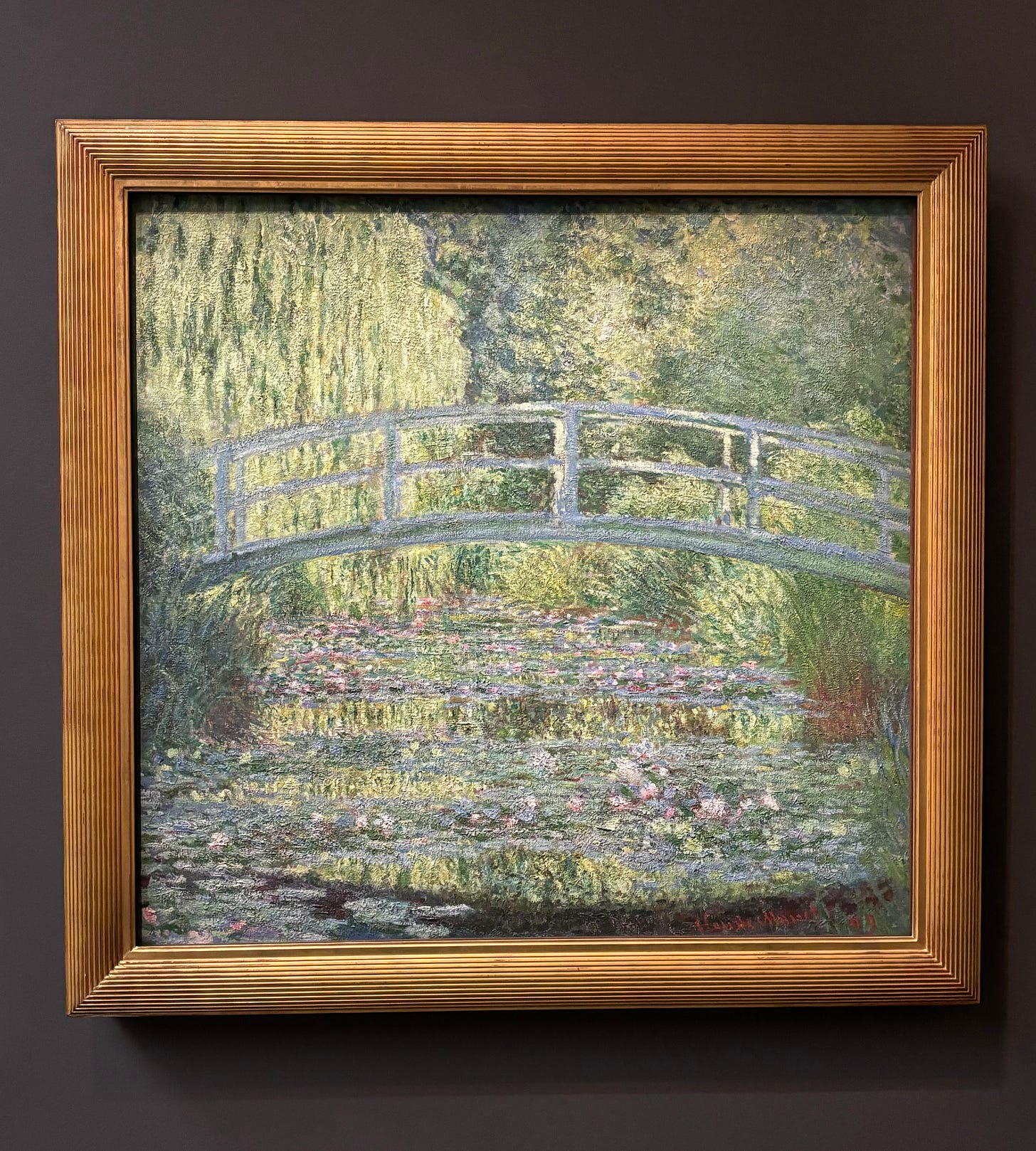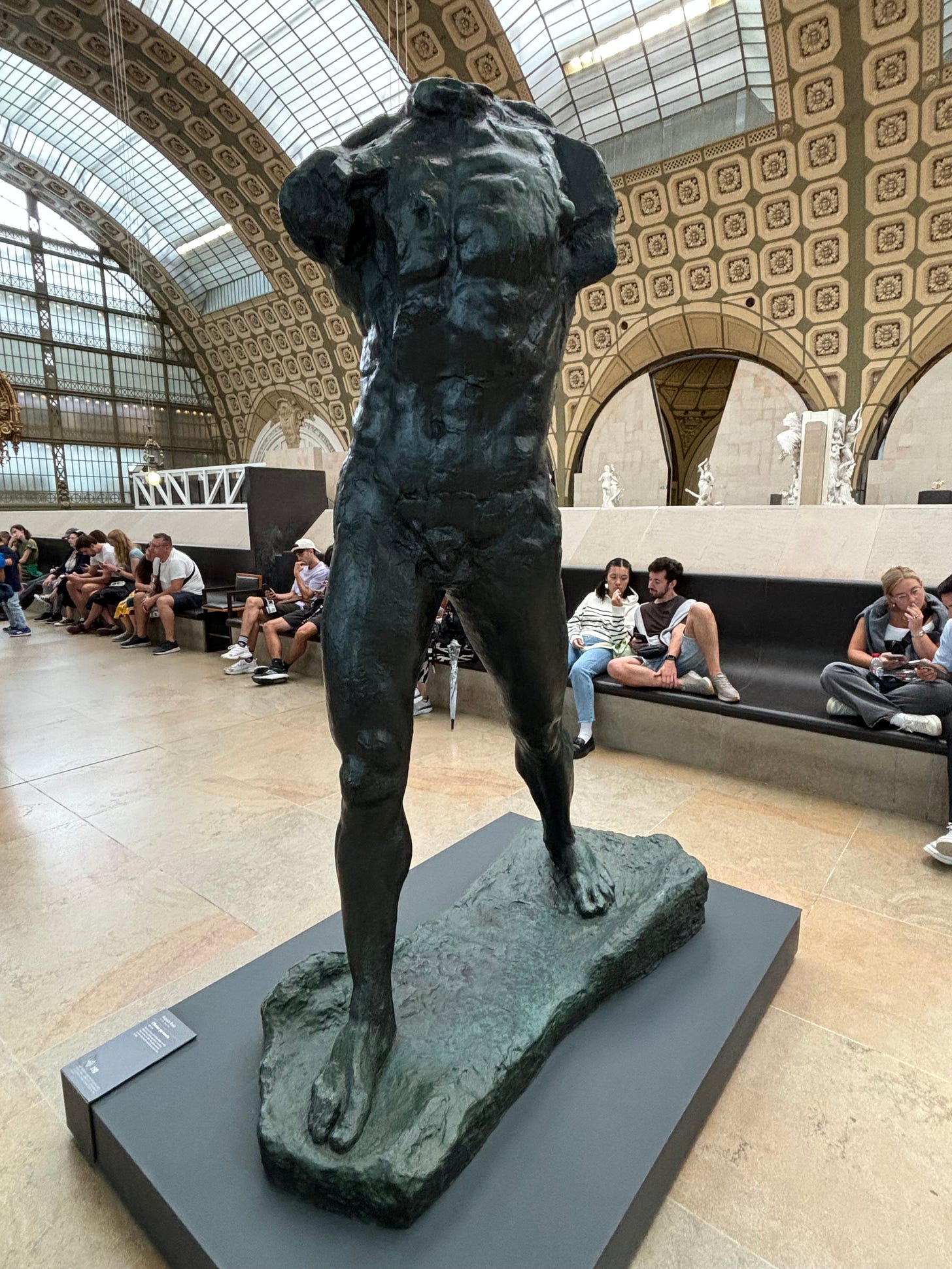“Art and love are the same thing: It's the process of seeing yourself in things that are not you.” Chuck Klosterman
On my last full day in Paris, I spent most of it at Musée d’Orsay. I wanted to specifically see Monet’s art since I was just at his house. But I also wanted to see Rodin’s work. I love his sculptures but I didn't have enough time to visit his museum again this trip. I also wanted to see the work one of my favorite artists of all time, Vincent Van Gogh. Plus, I wanted to see what else there was to discover.
I buzzed up the escalator to the fifth floor to start with Monet.
To stand in front of his original work from a place I just visited was fantastic. I know they have restored most everything at his estate, the weather can be brutal, but I walked across this bridge in theory. So to see it on canvas was breathtaking. Wow.
Water Lily Pond, Green Harmony 1899 by Claude Monet.
Blue Water Lilies 1916-1919 by Claude Monet.
I had read that Claude painted his first wife Camille on her deathbed after she died. I was curious to see this painting. His signature on this painting breaks my heart.
Camille on her Death Bed 1879 by Claude Monet.
On 5 September 1879, Camille, Monet's wife and the mother of his two sons, passed away. This poignant painting is a pictorial response to her death in which the artist tries to capture her in a final portrait: "...] finding myself at the bedside of a deceased person who was and still is very dear to me, I was surprised [...] to catch myself in the act of mechanically observing the sequence of changing colours that death had just imposed on her rigid features."
There were many more pieces of Claude’s art that I'd love to share but it would require a post dedicated only to him. He was a dutiful master of his craft and painted hundreds of beautiful paintings throughout his life. Surprisingly, d’Orsay has a very large collection. Go see it!
Rodin. I went to his museum in 2002. I love that his art is not indoors but in a sculpture garden behind his house and studio. I loved strolling the path and enjoying the fresh air while looking at his art. Indoors, it is still mesmerizing but it is just not the same as seeing it surrounded by bright green shrubs and trees…but I still loved it.
Victor Hugo 1883 by Auguste Rodin.
L'Homme qui marche 1907-1910 by Auguste Rodin.
I'm obsessed with signatures. I love Rodins. I’ve studied a little bit about handwriting analysis. The way Rodin makes his “d” in this sculpture is a sign of a highly creative artist or writer.
Keep reading with a 7-day free trial
Subscribe to The Wondering Wanderer to keep reading this post and get 7 days of free access to the full post archives.










